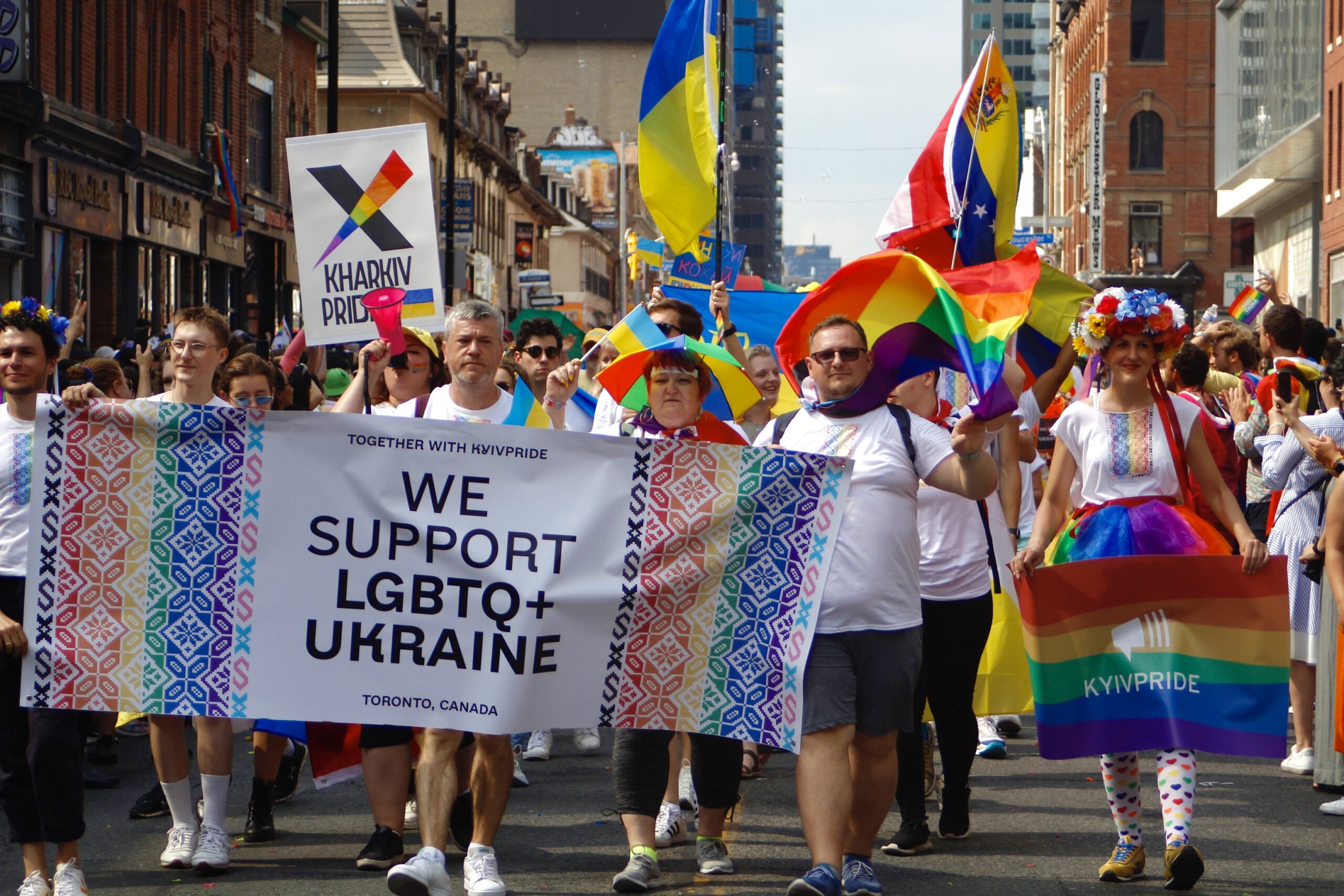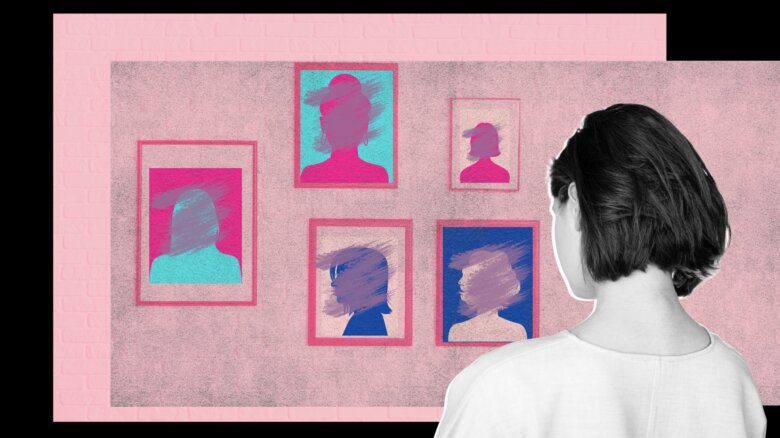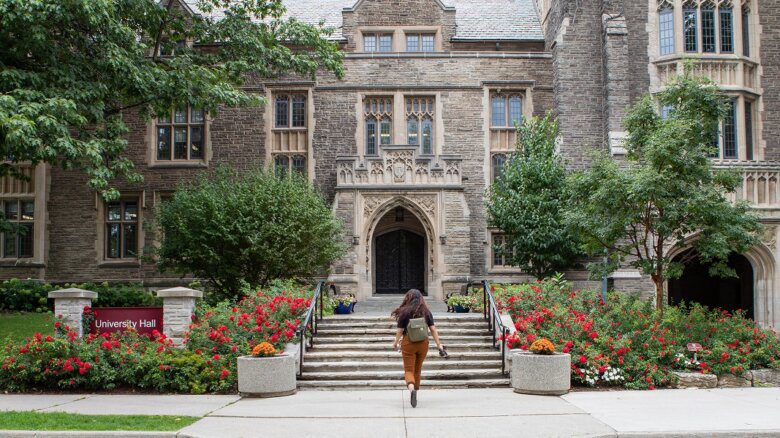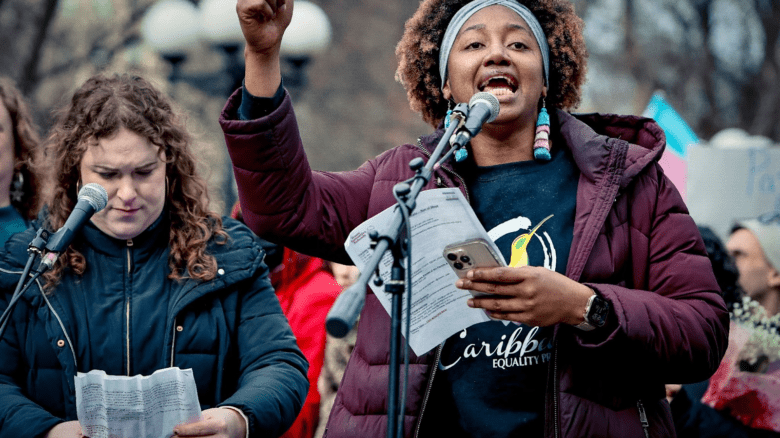Fifty-three years after the Stonewall uprising in New York City, which started on June 28, 1969, the last weekend of June can be an emotionally intense one for LGBTQ2S+ people; a time to assess how far we’ve come and how much more needs to be done in our own backyards and around the world. It’s also a time to party like there’s no tomorrow.
With some of the world’s most high-profile Pride events happening last weekend—New York, San Francisco, Toronto and Mexico City, to name some of the biggest—it was a moment of euphoric celebration for millions of queer and trans people and their allies, perhaps tens of millions all added together. We marched in the streets, danced in the rain and found community in beer gardens, parks, community centres, bars and backyards. This desire to celebrate after two years of lonely-making COVID-19 restrictions came at the same time as a desire to commiserate with like-minded people about injuries to our body politic: warped court decisions, hateful legislation, violence and threats of violence.
Frustratingly and sadly, Pride celebrations also catch the attention of those who resent our successes, and our very right to exist. But people partied through the tears and anger, as good queers should.
In the U.S., feelings ran especially high, with a spirit of protest and resistance overwhelming the party. Seven years ago, the country’s Supreme Court issued a well-timed Pride Week ruling in favour of same-sex marriage; this Pride Week that same court, now with three of nine judges appointed by former president Donald Trump, overruled Roe v. Wade, which had guaranteed U.S. abortion rights since 1973. The ruling has cast doubt on other rights, like marriage and sexual privacy, that LGBTQ+ people have won in the U.S.
In New York, Planned Parenthood, which provides reproductive and sexual healthcare, was pointedly chosen to lead the parade, New York’s first since 2019.
“Join us as we advocate for bodily autonomy at this year’s NYC Pride March,” declared a news release by Heritage of Pride, the group that organizes New York City’s Pride march. “This dangerous decision puts millions in harm’s way, gives government control over our individual freedom to choose and sets a disturbing precedent that puts many other constitutional rights and freedoms in jeopardy.”
A shooting outside and inside a gay bar in Oslo, Norway, which left two dead and 21 wounded last Saturday, was a heart-breaking and grave situation. It caused Pride events there to be put on pause and organizers around the world went on high alert, in some cases increasing security amidst fears of similar terrorist-style violence. But despite this and the throngs of people eager to reunite post-COVID restrictions, last weekend’s Pride celebrations saw few major incidents. In San Francisco, events were cut short early on Sunday when there were reports of a shooting, reports that turned out to be false. “There are rumours of an incident at SF Pride that we want to make clear,” organizers tweeted Sunday evening. “[I]t was a person spraying mace into the crowd. Although no one was harmed, we know it was not a pleasant experience. We decided to cut the performance short in the interest of safety.”

Credit: Jonathan Bertucchi
In Toronto, organizers tried to make the parade more eco-friendly, discouraging motorized vehicles (except for those powered by electricity and biofuel) and encouraging the entry of marching contingents. This allowed Pride Toronto to experiment with a barrier-free parade route, allowing watchers and participants to freely intermingle for the first time since the 1990s. Although many old-timers had been complaining about the barriers for the last two decades, the decision, which certainly slowed down the parade, got mixed reviews.
“Where were the barricades at Toronto Pride this year? I had to spend the entire march doing crowd control to keep my dancers safe,” complained Toronto photographer @onefacephotog on Twitter. On the other hand: “This is the longest Toronto Pride parade ever—we needed this,” tweeted Toronto Star columnist Shawn Micallef.
Though parades get the most attention during Pride festivities—especially from those who are shocked, just shocked, that an event rooted in sexual freedom might contain nudity—they are rarely the only communal experiences. In Toronto and in New York, for example, there were alternative events over the weekend that sought to question mainstream thinking about queerness and its relationship to authority and capitalism. In Canada’s biggest city, about 500 people joined the No Pride in Policing Coalition to call for the defunding of the police force (which has not been permitted to march in uniform in Toronto’s parade since 2017) and the abolition of prisons. New York’s Queer Liberation March took place at the same time as New York’s official parade, with the goal of getting the movement back to its grassroots, and resisting the efforts of marketers to turn Pride into a profit-driven consumer experience. “No cops or corporations in this one!” tweeted New York activist-journalist Your Activist Wonk from the march.
Away from the crowds, though, queer and trans people still found themselves being targeted. In what seemed to be a coordinated Pride-season campaign, libraries and performers in the U.S. and Canada were harassed and threatened over Pride-related events, particularly “drag storytime,” where drag performers give family-friendly book readings. Though the threats caused some drag storytimes to be cancelled, in Calgary, supporters turned up to make sure the entertainers felt safe. “We were planning for a nice, calm day and that’s what we’ve got,” Shauna May, manager of service delivery at the Calgary Public Library, told the CBC. “The program was fully registered and we had people waiting at the door to get in. It was oversubscribed and it shows programs like this are wanted.”

Credit: Jonathan Bertucchi
In other parts of the world, the oppression of LGBTQ+ people during Pride came from the establishment itself. In Istanbul, Turkey, nearly 400 protesters were detained by police on Sunday after local governors banned neighbourhood Pride events, a move that followed right-wing President Recep Tayyip Erdogan’s 2014 ban on city-wide Pride events. France 24 reports the Turkish activists were released after a night in custody. While Mitzpe Ramon, an Israeli town of about 5,000 people, banned the local Pride parade, which just launched in 2021, it allowed an anti-LGBTQ+ protest to march the same route. And in Beirut, Lebanon, a rainbow billboard promoting tolerance was vandalized after Bassam Mawlawi, the national minister of the interior, called on security forces to “immediately take the necessary measures to prevent any type of celebration, meeting or gatherings” by the LGBTQ+ community.
Yet LGBTQ2S+ people have an amazing power to make the best out of bad situations. The Pride parade in Warsaw, Poland, the largest parade in Eastern Europe, became a peace march in support of the Ukrainian people. “We are marching for political support for Ukraine, and we’re marching for basic human rights for Ukrainian people,” Lenny Emson, director of Kyiv Pride, who helped make the march happen, told reporters. “It is not a celebration. We will wait for victory to celebrate.”
In Mexico, an estimated 300,000 flooded the capital city to celebrate Pride. Despite a very high rate of violence against LGBTQ+ people, the country has warmed to increasing civil rights for queer and trans people over the last decade or so. Only five of the country’s 31 states still fail to allow same-sex marriage in their jurisdiction. So as part of Pride, hundreds of same-sex couples were married in a mass ceremony, Mexico City-sanctioned unions that legally must be recognized in their home state, whether the state allows same-sex marriage or not. Queer people, when they’re not challenging laws and policies, also know a thing or two about how to work the law to their advantage.
Of course, in the case of Pride, bigger is not always better. Hants County, Nova Scotia, a rural community of about 41,000, held its first-ever Pride event last weekend. It didn’t make international headlines, but attendees seemed to have a good time. “It’s important that these events take place in rural communities and not just major cities to show members of the local 2SLGBTQ+ community we stand in solidarity with them. What a great turnout!” tweeted local Liberal MP Kody Blois, who attended the gathering.


 Why you can trust Xtra
Why you can trust Xtra


